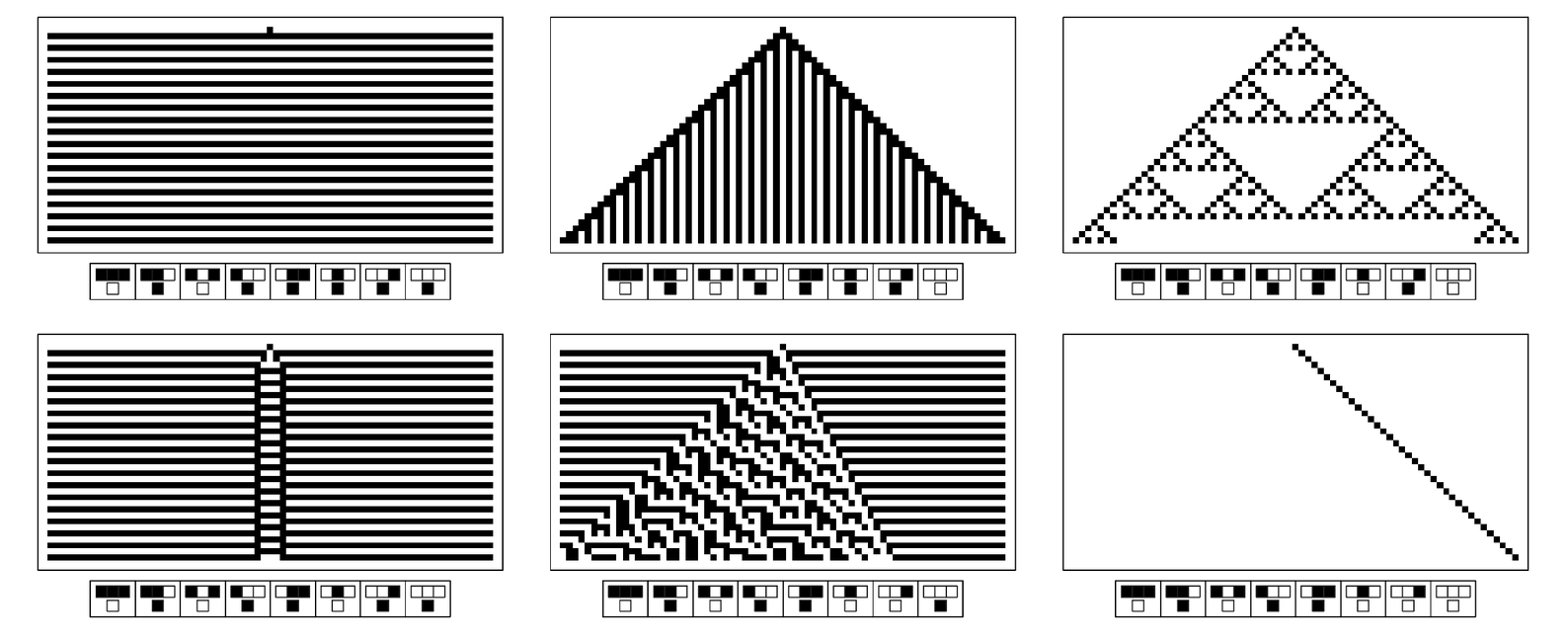For even programs with some of the very simplest possible rules yield highly complex behavior, while programs with fairly complicated rules often yield only rather simple behavior. And indeed, as we have seen many times in this book, and as the pictures below illustrate, even rules that are extremely similar can produce quite different behavior.
If one just looks at a rule in its raw form, it is usually almost impossible to tell much about the overall behavior it will produce. But in cases where this behavior ends up being simple, one can often recognize in it specific mechanisms that seem to be at work.
If the behavior of a system is simple, then this inevitably means that it will have many regularities. And usually there is no definite way to say which of these regularities should be considered causes of what one sees, and which should be considered effects.
But it is still often useful to identify simple mechanisms that can at least serve as descriptions of the behavior of a system.
In many respects the very simplest possible type of behavior in any system is pure uniformity. And uniformity in time is particularly straightforward, for it corresponds just to no change occurring in the evolution of a system. But uniformity in space is already slightly more complicated, and indeed there are several different mechanisms that can be involved in it. A rather straightforward one, illustrated in the first set of pictures

A sequence of elementary cellular automata whose rules differ from one to the next only at one position (a Gray code sequence). Despite the similarity of their rules, the overall behavior of these cellular automata differs considerably.



